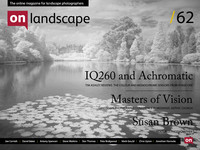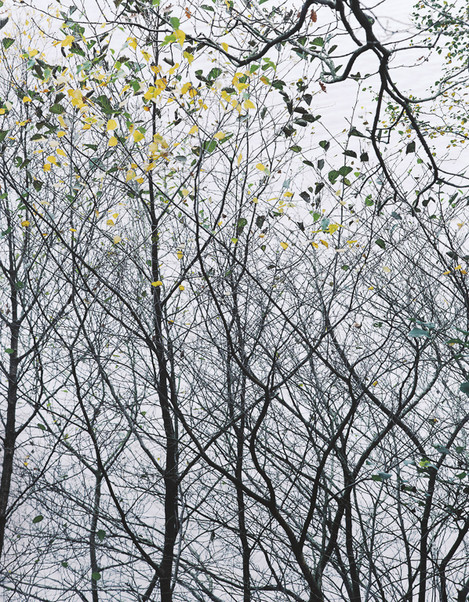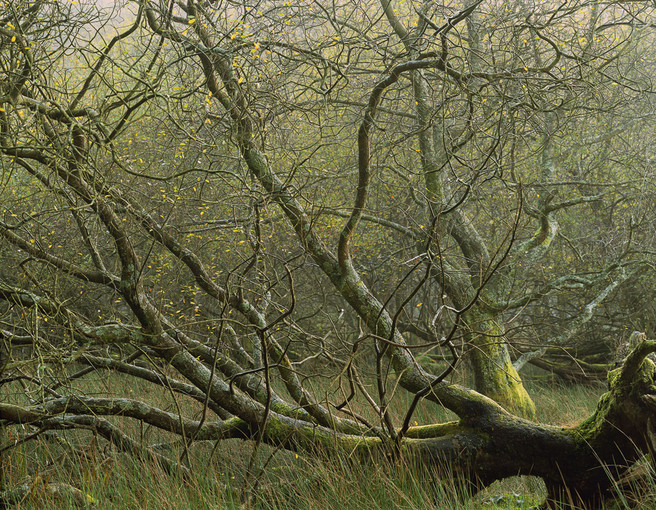Interview

Tim Parkin
Amateur Photographer who plays with big cameras and film when in between digital photographs.

Dav Thomas
Tree loving photographer, mainly using large format film cameras but also flirts with other formats.
Tim: You’ve been here from the start haven’t you?
Dav: I have. I was here at the start so this is the third one that I have done.
T: It’s almost like you’re part of the furniture. In fact you made the furniture!
D: It is my furniture indeed. Luckily I don’t have to put them up anymore he gets a chap in to do them. For the first one we had to make them, paint them and put them up. It was a bit of work
T: I was told that they nearly didn’t arrive this year.
D: No that’s true. They got the boards out a day before they had originally planned to and then Southwell have had incredible floods and six hours after they were removed the barn got completely flooded.
T: And fibreboard and water don’t mix
D: It would have all been over.
T: Everybody who is a ‘regular’ of the exhibition (Dav Thomas, Pete Bridgwood, Chris Upton, Mark Gould and Jonathan Horrocks) has seen there photography change over the last four years.
D: It has – hopefully we’ve all improved. In the first exhibition I had the sea and lighthouses with the sky and all sorts.
T: Now it’s just trees
D: Yep..
T: How do you go about picking a set of pictures being as you’ve just curated a set for your new book, I think there were about 120 to choose from?
D: Not quite that many – about 80 in the book. Well it was really just trying, as I do with these exhibitions, to get the images to flow so that they connect together. So the last one I did I approached it in a more seasonal way so each board had a theme. This time I just wanted to get a set that worked well together and had a character.
T: How do you think your photography has changed over the last four years?
D: I think that when I did the first exhibition I was finding my ‘voice’ as a photographer so it was more varied and I did do more obvious seaside photos. And it was the words of our Master of Vision Joe Cornish who said that you should photograph what you love and take pictures how you want take them and if they’re any good some people might also be interested in them. So since then I’ve photographed the things I enjoy seeing and in the places I enjoy being and I love being in woodland and have a real connection with it both as trees and as timber as I also make furniture.
T: As long as you don’t combine the two and chop down your subjects once finished. You might get in trouble for that
D: So I just try to enjoy my photography these days. I also work as a graphic designer so I try to bring that graphic element over to the work.
T: I just noticed that you’ve arranged them in landscape and portrait orientation per board too.
D: Yes – I think a lot of large format photographers don’t use the landscape format so much but I’m getting quite into it these days. I think a good half of my shots are in 5x4 landscape orientation these days.
The 5x4 in portrait orientation is very graphic and fits compositions quite well whereas in landscape it gives a bit more of a challenge. And I always like doing things that other people aren’t doing so that might have something to do with it.
T: You’ve had a couple of smaller exhibitions. Do you think that exhibiting changes your photography or your attitude to your pictures?
D: A lot of photographers don’t even bother printing their work, they just look at it on screen. Your photography comes alive when you print it – especially when you put it behind glass and frame it, that’s how they should be seen really. It’s great to hang them and step back to see them as a whole. Especially when you look at things on screen you only really see one image at a time – or small thumbnails. So to be able to step back and see them hung is quite a good, unique way of looking at them.
T: You obviously look at visual relationships between pictures in your books and in the exhibition – does this ever become a concern in the field?
D: No not really – I take so few photos at the moment I’d struggle with another constraint. I suppose I have a look that runs through them so they don’t jar.
T: It’s nice to see the large stained glass window behind your work too
D: It’s stunning isn’t it. You won’t get a better location to have an exhibition.
T: I think if you were to choose a place to have a permanent gallery this would do OK
D: It would do well I think. The organ music was a little challenging with a hangover this morning I must admit
T: I’m sure he went a bit Toccato/Hammer House of Horror this morning. It’s interesting though that the music plays complement to the landscape so well.
D: Yes – very scary
T: So, picking two images that you can tell me more about
D: I was telling Joe that I tend to look at my photos and choose the ones that I have the least problems with rather than favourites.
T: You’ve been looking at them a long time getting the book together
D: And the amount of dust spotting I did for the book I’m surprised I’m not sick of the sight of all of them to be honest.
The ones I’m most happy with are probably the Limes and Lemons, I’m really pleased at the graphical distillation of the view and the ambiguity that you don’t know which way you’re looking – in fact I was looking straight down at the water here. And although this is composed carefully it’s quite ‘loose’.
The other image is ‘Fallen’. I’m just really pleased with the tonality of this. I think you can only get that sort of colour with negative film where it adds it’s own palette.
T: There is a sense of three dimensionality to this which is wonderful as well. For that it is a complex network of branches it does have a visible depth. I notice that you also use larger apertures in your photography unlike your typical large format photographer.
D: It does seem to be the goal these days to get everything in focus but in woodland photography it can be quite nice to throw the background out and use the mist to isolate things. It gives a nice background screen to make the trees stand forward.
T: A final question for you – who would you like to see as the next Master of Vision.
P: Good question – It would be an obvious choice to get David Ward as the next master but I think it would be great to get someone like Sally Mann over.
T: I’m sure Pete could convince her.



